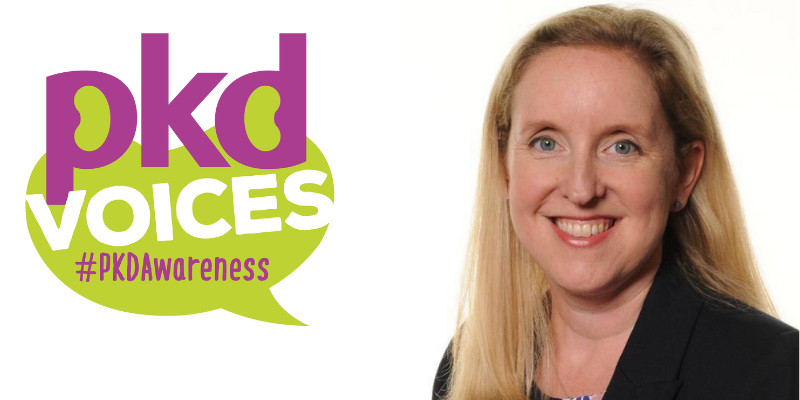
Nicola's Story: A ‘wee’ inconvenience, but worth it!
Nicola Moore opens up about the shock of discovering she had PKD after treatment for a knee injury, and the challenge of managing tolvaptan’s frequent bathroom trips - all while continuing as a secondary school teacher.
"When I seriously injured my knee exercising in 2017, my main concerns were who was going to cover my lessons as a secondary school biology teacher and whether I would make the school trip I had committed to – kidney disease could not have been further from my mind. An MRI scan revealed I had torn my ACL ligament and meniscus and would need surgery. During this time, my GP prescribed a non-steroid anti- inflammatory drug (NSAID) for pain relief.
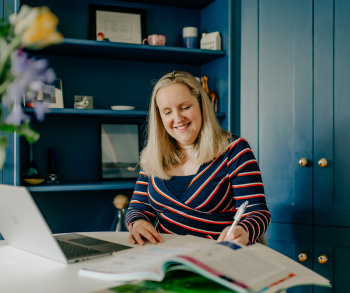
Discovery of cysts
After taking the NSAID for a year, my GP requested a blood test to check my kidney function. I had never had a kidney infection, had no family history of kidney disease, so was shocked when the test revealed my kidney function was lower than it should be. During an ultrasound scan of my kidneys, the sonographer mentioned something about cysts, so I casually asked where it was – only to learn there were hundreds of cysts in my kidneys, liver, pancreas and spleen.
An MRI scan and genetic testing then confirmed I had Autosomal Dominant Polycystic Kidney Disease (ADPKD). With no family history, I am a genetic mutant or de novo, which is the more delicate medical term for the about one in 10 of ADPKD patients with this background.
ADPKD is a genetic condition which causes fluid-filled sacs (or cysts) to develop in the kidneys and other organs. It can cause the kidneys to grow larger and damage tissue within them, leading to loss of function. Mutations in the PKD1 gene (type 1) cause more rapid progression than PKD2 (type 2) mutations.
Learning about tolvaptan
I started to see a kidney consultant in February 2019, who told me about the drug tolvaptan, which could slow down the progression of my disease. I was keen to give it a go, as there were no alternative treatments. However, tolvaptan is an expensive drug and NICE guidelines restrict it to patients with evidence of rapidly progressing disease, which means not everybody with ADPKD qualifies for treatment. Despite my new diagnosis, the lack of historical data meant, initially, there wasn't enough evidence to qualify me for the drug.
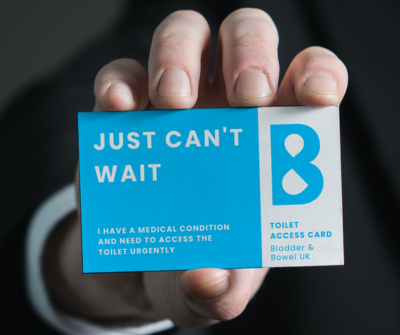
Just can’t wait – for the loo!
I finally qualified for tolvaptan in February 2022, but felt daunted by managing the drug’s side effects. It works by blocking a hormone called vasopressin, which normally causes the kidneys to reabsorb water back into the blood; without it, you feel more thirsty, need to drink more water and pass urine more often. I was worried about whether I would drink enough water, as I often didn’t feel thirsty and whether I'd wet myself!
Through the Polycystic Kidney Disease Charity, I discovered the tolvaptan Facebook group and it was useful to hear other people’s experiences and recommendations, such as obtaining the Bladder and Bowel UK’s ‘Just Can’t Wait Card’ which gives access to toilets not normally available to the public.
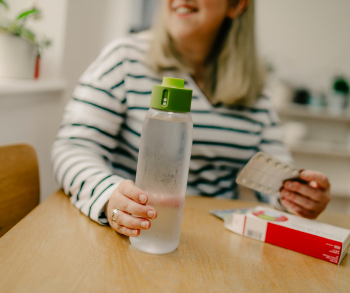
Learning to live with tolvaptan
The first couple of months were hard. I was so thirsty all the time, particularly at night, gulping down lots of water only to wake up an hour later to go to the loo. I quickly realised it helped if I took the second tablet earlier in the day and stayed away from anything salty and big meals in the evening.
And, I did not wet myself – turns out I still have bladder control, just like before, which is quite a relief, as I spend my day standing in front of teenagers!
I do, however, go to the loo far more often (about 10-12 times a day) or about every hour and a half in the day and twice during the night. At school, accessing drinking water is not always easy, so I take four, 750ml water bottles with me. Fortunately, my classroom is close to a staff toilet and I time my loo breaks with lesson changes.
So far, I have found it manageable. I’ve also explained the basics to our HR department and now have the added bonus of not having to invigilate exams or go on long, coach trips!
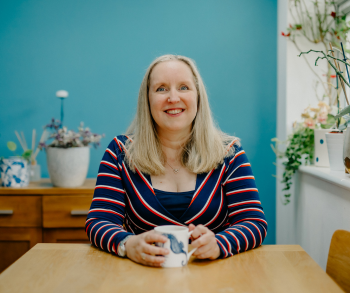
The Benefits
After my first month on tolvaptan, the dose was titrated up, which is usual, but my eGFR dropped by 11. I had read on the Facebook group that a slight drop in eGFR was normal and nothing to worry about, but my consultant stopped my tolvaptan for a month – and I will not lie, I was so ready for the extra sleep! He then put me back on the lower, starting dose of 45mg in the morning and 15mg in the afternoon and thankfully, my eGFR came back up.
I have now been on that dose for just over a year and my eGFR is stable. Tolvaptan's benefits are greater the earlier you take it, so I am not sure how much extra time it will buy me before my kidneys fail. But I find the side effects manageable (even though I drink about four to five litres a day now!) and, like many women, I am used to being aware of where the nearest toilets are. On balance, I feel continuing with tolvaptan is my best option for the moment."
Get a Just Can’t Wait Card: Bladder and Bowel UK: www.bbuk.org.uk
Photography by Peter Flude: www.peterflude.co.uk
